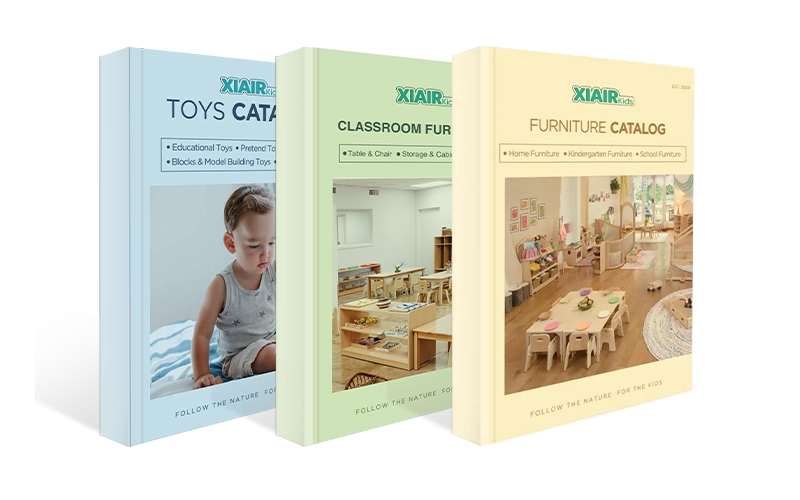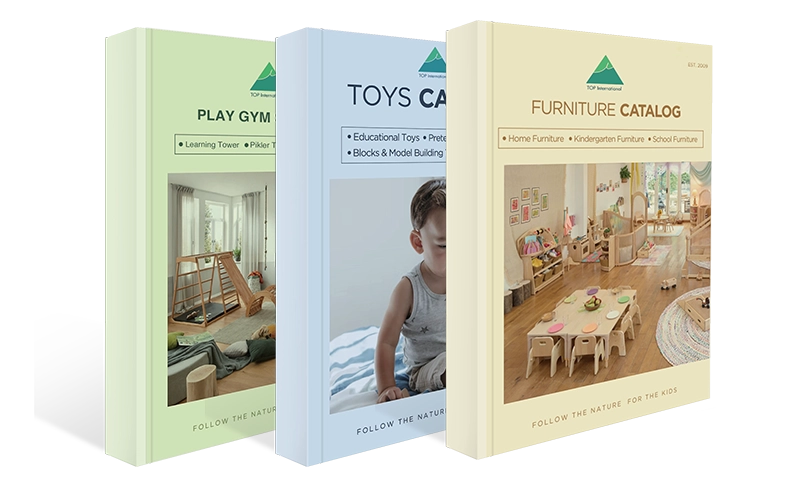คุณกังวลเกี่ยวกับลูกของคุณ การพัฒนาการรู้หนังสือในระยะเริ่มต้น และสงสัยว่าจะช่วยพวกเขาสร้างทักษะการอ่านและการเขียนที่จำเป็นตั้งแต่อายุยังน้อยได้อย่างไร
Many parents and educators feel overwhelmed by the complexities of emergent literacy and how to nurture a child’s development in this crucial stage properly. Without a strong foundation in early literacy skills, children may struggle to catch up in later years, potentially affecting their academic performance and confidence in learning.
ข่าวดีก็คือ การทำความเข้าใจกระบวนการอ่านออกเขียนได้ในระดับเริ่มต้นและการทำกิจกรรมง่ายๆ ที่เป็นประโยชน์ จะช่วยให้บุตรหลานของคุณพัฒนาทักษะสำคัญๆ ที่จะนำไปสู่ความสำเร็จในการอ่านได้ บทความนี้จะสำรวจความสำคัญของการรู้หนังสือในระดับเริ่มต้น และนำเสนอกลยุทธ์และกิจกรรมที่เป็นประโยชน์เพื่อสนับสนุนการพัฒนาการรู้หนังสือในระดับเริ่มต้นในเด็ก

1. What is Emergent Literacy?
การรู้หนังสือในระดับเริ่มต้นหมายถึงทักษะ ความรู้ และทัศนคติที่เด็กๆ พัฒนาขึ้นในขณะที่โต้ตอบกับภาษาเขียนและภาษาพูด ประสบการณ์การรู้หนังสือในช่วงเริ่มต้นนี้เกิดขึ้นก่อนเริ่มการเรียนการสอนการอ่านและการเขียนอย่างเป็นทางการ ซึ่งมักเกิดขึ้นในช่วงก่อนวัยเรียน การรู้หนังสือในระดับเริ่มต้นในระดับก่อนวัยเรียนไม่ได้หมายถึงการเรียนรู้ตัวอักษรเพียงอย่างเดียวเท่านั้น แต่ยังรวมถึงการพัฒนาทักษะต่างๆ อีกด้วย
ทฤษฎีการรู้หนังสือแบบฉับพลันของ Marie Clay

มารี เคลย์, a renowned researcher in early childhood education, developed the emergent literacy theory. This theory is premised on the idea that children bring their unique experiences and knowledge to learning to read and write. Clay emphasized that children’s early literacy behaviors are influenced by their interactions with the world around them, including caregivers, peers, and the environment.
ทฤษฎีของเคลย์เน้นย้ำถึงความสำคัญของการที่เด็กๆ มีส่วนร่วมอย่างแข็งขันในการพัฒนาทักษะการอ่านออกเขียนได้ ตามการวิจัยของเธอ เด็กๆ จะเรียนรู้ได้ดีที่สุดเมื่ออยู่ในสภาพแวดล้อมที่มีสื่อสิ่งพิมพ์มากมาย มีโอกาสโต้ตอบกับหนังสือ และได้รับคำแนะนำจากผู้ดูแลหรือนักการศึกษาที่เป็นแบบอย่างพฤติกรรมการเรียนรู้
นิยามการรู้หนังสือในระดับเริ่มต้น
การรู้หนังสือในระดับเริ่มต้นเป็นกระบวนการที่เด็กเล็กพัฒนาความเข้าใจภาษาเขียนและภาษาพูดก่อนที่พวกเขาจะสามารถอ่านหรือเขียนได้ด้วยตนเอง ขั้นตอนแรกของการพัฒนาการรู้หนังสือนี้รวมถึงการเข้าใจแนวคิดเกี่ยวกับตัวอักษร เช่น การจดจำตัวอักษร เสียง และคำ และการตระหนักว่าตัวอักษรมีความหมาย
พื้นฐานสำคัญของการรู้หนังสือในระดับเริ่มต้นคือการวางรากฐานสำหรับทักษะการรู้หนังสือในอนาคต รากฐานเริ่มต้นจากที่เด็กๆ สำรวจสภาพแวดล้อม ฟังภาษา และโต้ตอบกับผู้ใหญ่ผ่านการอ่าน การสนทนา และการเล่น ผ่านประสบการณ์ในช่วงเริ่มต้นเหล่านี้ เด็กๆ จะมีความตระหนักรู้เกี่ยวกับโครงสร้างและการใช้ภาษา ซึ่งเป็นแนวทางในการพัฒนาทักษะการรู้หนังสือ
ทฤษฎีของเธอมีอิทธิพลอย่างยาวนานต่อการศึกษาปฐมวัย โดยมีอิทธิพลต่อวิธีการที่นักการศึกษาใช้สอนการอ่านและการเขียนในระยะเริ่มต้นของการพัฒนาการรู้หนังสือ
2. The Importance of Emergent Literacy
ทักษะการอ่านและการเขียนขั้นพื้นฐานมีความสำคัญต่อการพัฒนาทักษะการอ่านและการเขียนในภายหลัง หัวข้อนี้จะเน้นที่ความสัมพันธ์ระหว่างทักษะการอ่านและการเขียนขั้นพื้นฐานกับการพัฒนาภาษา โดยเน้นที่ประเด็นสำคัญที่ส่งผลต่อการเรียนรู้ในวัยเด็กตอนต้น เช่น การรับรู้ทางสัทศาสตร์ การรับรู้เกี่ยวกับสื่อสิ่งพิมพ์ การเรียนรู้คำศัพท์ และการส่งเสริมความรักในการอ่าน

การพัฒนาทักษะการอ่านออกเขียนได้และภาษาขั้นเริ่มต้น
การรู้หนังสือตั้งแต่เนิ่นๆ มีความเกี่ยวพันอย่างใกล้ชิดกับการพัฒนาภาษา การรู้หนังสือในระดับเริ่มต้นและการพัฒนาภาษานั้นมีความเชื่อมโยงกัน ยิ่งเด็กๆ ได้สัมผัสกับภาษาพูดหรือภาษาเขียนมากเท่าไร โอกาสที่พวกเขาจะพัฒนาทักษะการอ่านออกเขียนได้ก็จะยิ่งมีมากขึ้นเท่านั้น การพัฒนาภาษาประกอบด้วยความเข้าใจเกี่ยวกับไวยากรณ์ โครงสร้างประโยค และคำศัพท์ รากฐานนี้มีความสำคัญอย่างยิ่งในการเตรียมความพร้อมให้เด็กๆ อ่านและเขียนได้สำเร็จ
Children acquire the language skills necessary to make sense of written texts later on through activities such as reading aloud, storytelling, and engaging in conversations. Listening to stories helps children understand narrative structures and expands their vocabulary, which is essential for developing literacy.

Receive a free catalog and custom layout to help you design your ideal classroom easily.
การส่งเสริมการเรียนรู้ในช่วงวัยเด็กตอนต้น
การส่งเสริมการรู้หนังสือในระดับเริ่มต้นถือเป็นสิ่งสำคัญสำหรับการพัฒนาทางปัญญาและความสำเร็จทางวิชาการ เด็กๆ จะเปิดรับการเรียนรู้ภาษาและการอ่านออกเขียนได้เป็นพิเศษในช่วงปีแรกๆ ดังนั้นการส่งเสริมการรู้หนังสือในช่วงเวลาดังกล่าวจึงสามารถส่งผลในระยะยาวได้ ประสบการณ์การรู้หนังสือในช่วงแรกๆ เช่น การให้เด็กอ่านหนังสือให้ฟัง เล่นเกมคำศัพท์ และพูดคุยเกี่ยวกับเรื่องราวต่างๆ จะช่วยส่งเสริมให้เด็กๆ รักการอ่าน
นอกจากนี้ กิจกรรมการเรียนรู้สำหรับเด็กก่อนวัยเรียนยังช่วยปลูกฝังความรักในการเรียนรู้ กิจกรรมที่ดึงดูดใจเหล่านี้จะช่วยสนับสนุนการพัฒนาการคิดวิเคราะห์ ความเข้าใจภาษา และทักษะทางสังคม ซึ่งล้วนจำเป็นต่อความสำเร็จในโรงเรียนและในชีวิต
การพัฒนาภาษา
การพัฒนาภาษาเป็นหนึ่งในประโยชน์หลักของกิจกรรมการเรียนรู้สำหรับเด็กก่อนวัยเรียน ในช่วงปีแรกๆ เหล่านี้ เด็กๆ จะได้เพิ่มคลังคำศัพท์และพัฒนาความเข้าใจในโครงสร้างของภาษา กิจกรรมต่างๆ เช่น การสัมผัส การร้องเพลง และการเล่านิทาน จะช่วยพัฒนาความเข้าใจภาษาและความสามารถในการสื่อสารของเด็กๆ
ผู้ดูแลและนักการศึกษาสามารถมีส่วนสนับสนุนการพัฒนาภาษาของเด็กได้อย่างมากด้วยการจัดโอกาสให้เด็กๆ ได้มีส่วนร่วมในกิจกรรมที่ใช้ภาษาอย่างหลากหลาย เช่น การอ่านนิทานและการโต้ตอบกับผู้อื่น

ความตระหนักทางสัทศาสตร์
Phonological awareness is another cornerstone of emergent literacy skills in early childhood education. Phonological awareness involves recognizing and manipulating the sounds of language. Children develop this skill through games, songs, and rhyming activities that help them identify syllables, rhymes, and individual sounds.
ทักษะนี้มีความสำคัญต่อการอ่าน เพราะจะช่วยให้เด็กๆ ถอดรหัสคำศัพท์ได้โดยการเชื่อมโยงเสียงกับตัวอักษร ตัวอย่างเช่น เด็กๆ ที่สามารถแยกเสียงแรกในคำว่า “cat” (เสียง “c”) ได้ จะสามารถอ่านและเข้าใจคำศัพท์ใหม่ๆ ได้ดีขึ้นในอนาคต
การรับรู้ด้านการพิมพ์
การตระหนักรู้ถึงสิ่งตีพิมพ์หมายถึงความเข้าใจของเด็กว่าสิ่งตีพิมพ์มีความหมายและใช้เพื่อสื่อความคิด ซึ่งรวมถึงการรับรู้ว่าคำต่างๆ อ่านจากซ้ายไปขวา และการเขียนสัมพันธ์กับคำพูด ผ่านกิจกรรมการเรียนรู้ด้านการอ่านออกเขียนได้ เด็กๆ จะเรียนรู้ว่าหนังสือมีหน้าปกและปกหลัง หน้าหนังสือจะพลิกไปในทิศทางที่กำหนด และคำต่างๆ บนหน้ากระดาษจะประกอบกันเป็นเรื่องราว
การสนับสนุนให้เด็กๆ ดูหนังสือ ชี้ไปที่คำ และพูดคุยเกี่ยวกับรูปภาพขณะอ่านจะช่วยส่งเสริมความตระหนักรู้ในเรื่องนี้ ยิ่งเด็กๆ อ่านหนังสือมากเท่าไร ความตระหนักรู้ในหนังสือก็จะยิ่งมากขึ้นเท่านั้น ซึ่งจะช่วยปูทางไปสู่การเรียนรู้การอ่านอย่างเป็นทางการมากขึ้น

การเรียนรู้คำศัพท์
การสร้างคลังคำศัพท์ที่แข็งแกร่งเป็นองค์ประกอบสำคัญของการรู้หนังสือเบื้องต้น คลังคำศัพท์ของเด็กๆ จะเติบโตขึ้นผ่านการโต้ตอบกับผู้ใหญ่ การได้รับฟังเรื่องราวต่างๆ และการมีส่วนร่วมในการสนทนา การได้ยินและใช้คำศัพท์ใหม่ๆ ในบริบทต่างๆ ช่วยให้เด็กๆ เข้าใจความหมายและเรียนรู้วิธีใช้คำศัพท์เหล่านั้นอย่างมีประสิทธิภาพในการพูดและเขียน
การพัฒนาคลังคำศัพท์ให้แข็งแกร่งจะช่วยเพิ่มความสามารถของเด็กในการทำความเข้าใจข้อความและแสดงความคิดอย่างชัดเจน การเรียนรู้คำศัพท์เป็นสิ่งสำคัญสำหรับการอ่านและทำความเข้าใจภาษาพูดและผลการเรียนที่ดีในโรงเรียน
ความรักในการอ่าน
Finally, one of the most critical aspects of emergent literacy is fostering a love for reading. Children who develop a positive attitude towards books and reading are likelier to engage in independent reading later in life. Reading aloud to children, exposing them to various books, and encouraging them to “read” independently are all strategies that help build this love.

3. How Children Develop Literacy?
Literacy development is a gradual, multi-stage process that begins at birth and continues into adulthood. It involves acquiring various skills, from recognizing sounds and symbols to understanding complex texts and expressing ideas through writing. Each phase of literacy development builds upon the previous one, and understanding these stages helps parents and educators provide age-appropriate support. While children progress at different rates, there are five generally recognized stages in literacy development, each marked by distinct learning milestones.
Emergent Literacy (0–5 years of age)
Children begin to understand the basics of communication and printed language during the emergent literacy stage. This phase starts from birth, as babies and toddlers are immersed in the sounds of spoken language. Through exposure to books, conversations, songs, and storytelling, children begin to grasp that language has structure and meaning. By age five, many can recognize letters, understand that text conveys information, and show interest in “reading” familiar books by memory.

Alphabetic Fluency (5–8 years of age)
As children enter school, they transition into the alphabetic fluency stage. Here, they decode words using letter-sound relationships and recognize common sight words. Children learn how letters form sounds and how these sounds form words—a critical step toward fluent reading. They also begin to write using simple sentences and invented spelling based on how words sound.

Words and Patterns (7–9 years of age)
In the words and patterns stage, children recognize patterns within words, such as prefixes, suffixes, and word families. This stage overlaps with alphabetic fluency but introduces more complex spelling and vocabulary rules. Children develop a deeper understanding of language conventions, punctuation, and grammar. They move from sounding out every word to recognizing word chunks, which increases reading speed and accuracy.

Intermediate Reading (9–15 years of age)
The intermediate reading stage shifts from “learning to read” to “reading to learn.” Children are now able to tackle more complex texts across a variety of subjects. They read for enjoyment and to gather information, analyze ideas, and think critically. At this stage, vocabulary grows rapidly as children encounter more technical and content-specific words, especially in science, history, and literature.

Advanced Reading (15 to adult)
In the advanced reading stage, literacy is no longer a skill being learned—it is a tool used for higher-level thinking, communication, and exploration. Teenagers and adults in this phase can interpret abstract ideas, analyze arguments, and read across genres and disciplines. They can form well-supported opinions, conduct independent research, and communicate ideas through sophisticated writing.

Decoding: Decoding is translating written symbols into sounds and words. It relies on understanding letter-sound relationships and is essential for early reading success. Mastery of phonics supports accurate and fluent reading.
Fluency: Fluency is reading with speed, accuracy, and proper expression. Fluent readers can focus on comprehension rather than decoding each word. Repeated reading and oral practice help build fluency.
Vocabulary: A strong vocabulary enables children to understand what they read and express themselves clearly. Vocabulary grows through conversation, reading, and exposure to diverse texts. It’s a key predictor of reading comprehension.
Sentence Structure and Cohesion: Understanding how sentences are formed and connected improves reading comprehension and writing clarity. Teaching grammar, conjunctions, and transitions helps students express ideas logically and read with better understanding.
Experience, Reasoning, and Background Knowledge: Prior knowledge and life experiences shape how children understand texts. The more they know, the easier it is to make inferences, draw conclusions, and connect new ideas to existing ones.
Working Memory and Attention: Working memory allows children to hold and process information while reading, while attention helps them stay focused. Both are critical for understanding longer texts, following plots, and completing reading tasks effectively.
4. Suitable Emergent Literacy Activities for Preschoolers
Developing emergent literacy skills during preschool is essential to building a strong foundation for future reading and writing. Young children learn best through play, repetition, and interaction, making choosing engaging, developmentally appropriate activities rooted in language-rich experiences essential.
เกมการรับรู้ทางสัทศาสตร์
Games like rhyming, clapping syllables, or “I Spy” with sounds enhance children’s ability to hear and manipulate language. These skills are essential for decoding words later on. Keep it playful and consistent for maximum effect. Try tongue twisters or simple chants to reinforce beginning sounds. Sort objects or pictures by their starting sounds for a hands-on experience. Encourage children to create their own rhymes or silly sound combinations.
กิจกรรมการเขียนแบบโต้ตอบ
Let children draw, scribble, or “write” their own stories. Offer crayons, markers, and writing prompts. Encourage them to talk about what they’re drawing or “reading” back their stories. Introduce name-writing early to personalize their writing journey. Use story starters to inspire creativity and encourage sentence building. Allow invented spelling to be a natural part of early writing development.
กิจกรรมการจดจำตัวอักษร
Use songs, flashcards, and magnetic letters to teach letter names and sounds. Focus on the letters in the child’s name first. Make learning multisensory with hands-on materials and repetition to help retention.
Incorporate movement by having children form letters with their bodies or in sand. Play alphabet matching or memory games to reinforce recognition. Create letter-of-the-week activities to focus on one sound at a time.

การสำรวจการรับรู้ด้านการพิมพ์
Label everyday items around the house or classroom. Point out signs, menus, and packaging to show how print is used. Let children help write grocery lists or notes. Use daily routines—like setting the table or cleaning up—as opportunities to spot and use print. Provide books with clear print and point to words as you read aloud. Encourage children to notice environmental print, like store logos or street signs.
Take Your Time
When reading, pause to discuss the pictures, repeat new words, and allow your child to ask questions. Rather than rushing through a story, encourage your child to predict what will happen next or retell it in their own words. These actions develop comprehension, sequencing skills, and vocabulary. The same goes for routine tasks—describe what you are doing, name objects, and allow children to respond. The more time you give for these interactions, the deeper their engagement and learning.
Build on Their Words
Children often say the most imaginative things. Use those moments as opportunities to build their language and literacy skills. When your child says a word or a sentence, expand on it. For example, if a child says, “dog bark,” you might respond, “Yes, the big brown dog is barking loudly because he hears a noise.” This affirms the child’s words and introduces them to new vocabulary, sentence structure, and ideas.
Let Your Child “Write”
Ask them to “read” their writing to you, even if it’s just a string of marks or drawings. This builds confidence and reinforces the concept that writing is a way to express thoughts. As children gain more control over their fine motor skills, guide them gently towards forming shapes and letters, starting with the letters in their names. You can also use tools like sand trays, finger paints, or salt writing boards to make writing more sensory and fun. Activities that develop fine motor coordination—like playing with playdough, stringing beads, or using tongs—also support the physical skills needed for writing.
Play Word Games
Word play is a fun and effective way to build phonological awareness, which is the ability to recognize and manipulate the sounds in words—a critical skill for learning to read. Depending on your child’s age and development, you can adjust the complexity of the games.
Babies
Word games focus on sound exposure and listening for babies. Sing nursery rhymes, talk about what you’re doing, and play peekaboo while emphasizing specific words. Babies are naturally drawn to rhythm and repetition, which supports language learning. Name body parts, toys, and actions throughout the day to build their receptive vocabulary.
Toddlers
With toddlers, begin introducing rhyming games and songs. Use fingerplays like “Itsy Bitsy Spider” or “Wheels on the Bus” that incorporate movements and rhymes. Ask them to find objects that rhyme or start with a specific sound. Repeat their responses and add more detail to keep them engaged and learning.
Preschoolers
Preschoolers can begin playing more structured word games. Try “I Spy” with sounds like “I spy something that starts with the ‘b’ sound.” Introduce alliteration and let them devise silly phrases like “Sammy snake sips soup.” You can also play matching games with picture cards, where they match images based on beginning sounds or rhyming words.
These games build awareness of how language sounds and functions, providing a strong foundation for decoding words when they begin to read.

5. How to Promote Emergent Literacy in the Classroom?
Promoting emergent literacy in the classroom is essential to creating a strong foundation for children’s future reading and writing abilities. As educators, creating an environment that supports the development of language, phonological awareness, and print concepts is crucial. Below, we’ll explore several classroom strategies for promoting emergent literacy.
สร้างกิจวัตรประจำวัน
การกำหนดกิจวัตรประจำวันอย่างสม่ำเสมอถือเป็นวิธีที่มีประสิทธิภาพที่สุดวิธีหนึ่งในการส่งเสริมทักษะการอ่านออกเขียนได้ในห้องเรียน กิจวัตรประจำวันช่วยให้เด็กๆ รู้สึกปลอดภัยและเข้าใจโครงสร้างของวัน ซึ่งจะส่งเสริมการเรียนรู้ กิจวัตรประจำวันที่คาดเดาได้ยังช่วยให้เด็กๆ ฝึกทักษะการอ่านออกเขียนได้ระหว่างทำกิจกรรมประจำวันอีกด้วย
For instance, you can create a morning routine where children have time to engage with books. Start the day by reading aloud a simple, engaging story. During circle time, you could introduce new vocabulary words, ask children to repeat after you, and practice letter recognition by pointing to the letters in the room. As children become familiar with these routines, they will naturally pick up language skills, especially when they can predict what comes next.
Another key part of establishing routines is to incorporate repetitive language. During daily activities, songs, rhymes, and familiar phrases can significantly help reinforce phonological awareness, a key component of emergent literacy. When children hear rhymes or repeat words in songs, they begin recognizing patterns in language, which strengthens their early reading skills.
อ่านบ่อยๆ
การอ่านออกเสียงให้เด็กฟังเป็นประจำเป็นวิธีที่มีประสิทธิภาพที่สุดวิธีหนึ่งในการส่งเสริมทักษะการอ่านขั้นพื้นฐาน การอ่านหนังสือบ่อยๆ จะทำให้เด็กได้เรียนรู้คำศัพท์ใหม่ๆ โครงสร้างประโยค และรูปแบบเรื่องราว ไม่ว่าจะเป็นหนังสือภาพสั้นหรือเรื่องราวยาวๆ
ในห้องเรียน ให้กำหนดกิจวัตรการอ่านประจำวัน กำหนดเวลาเฉพาะสำหรับการอ่านออกเสียงให้เด็กๆ ฟัง และเตรียมหนังสือหลากหลายประเภทที่ครอบคลุมหัวข้อ แนวเรื่อง และระดับความซับซ้อนที่แตกต่างกัน ขณะอ่านหนังสือ ให้เน้นแนวคิดสำคัญ เช่น ชื่อตัวละคร ลำดับเหตุการณ์ และแนวคิดพื้นฐานในการอ่าน เช่น ทิศทางของการอ่าน (จากซ้ายไปขวา)
นอกจากนี้ การทำให้การอ่านเป็นประสบการณ์ร่วมกันยังเป็นสิ่งสำคัญ ส่งเสริมให้เด็กๆ มีส่วนร่วมกับเนื้อหาโดยถามคำถามเกี่ยวกับเรื่องราว ให้พวกเขาคาดเดาสิ่งที่จะเกิดขึ้นต่อไป หรือแม้แต่กระตุ้นให้พวกเขา "อ่าน" รูปภาพ การโต้ตอบนี้จะช่วยเพิ่มความเข้าใจและการรับรู้สิ่งที่พิมพ์ออกมา พร้อมทั้งกระตุ้นความสนใจในการอ่านของพวกเขา
ฝึกทักษะการใช้ภาษาพูด
การเน้นพัฒนาทักษะการพูดในห้องเรียนถือเป็นรากฐานสำคัญของการรู้หนังสือเบื้องต้น เด็กๆ ที่สามารถแสดงความคิดของตนออกมาได้อย่างชัดเจนและมีคำศัพท์มากมายจะเตรียมพร้อมที่จะเข้าใจภาษาเขียนได้ดีกว่า
เพื่อส่งเสริมทักษะการพูด ควรเปิดโอกาสให้เด็กๆ ได้สนทนาทั้งแบบมีโครงสร้างและไม่มีโครงสร้าง ในช่วงเวลาเล่น ควรสนับสนุนการสนทนาที่เด็กๆ ได้แสดงความคิด ความรู้สึก และการสังเกตของตนเอง การถามคำถามปลายเปิด เช่น "คุณคิดว่าจะเกิดอะไรขึ้นต่อไป" หรือ "คุณรู้สึกอย่างไรกับเรื่องราวนี้" จะช่วยให้เด็กๆ พัฒนาทักษะการใช้ภาษาในการแสดงออกและฝึกการสร้างประโยค
You can also engage children in oral storytelling activities. Ask them to create stories based on images or experiences. This helps build language skills and encourages creativity and narrative thinking, which are foundational for later reading comprehension.

ส่งเสริมการสนทนา
การส่งเสริมการสนทนาระหว่างเด็กถือเป็นสิ่งสำคัญในการส่งเสริมทักษะการอ่านเขียนเบื้องต้น ปฏิสัมพันธ์กับเพื่อนช่วยให้เด็กมีโอกาสฝึกทักษะภาษาในบริบททางสังคม การสนทนาช่วยให้เด็กเข้าใจถึงความสำคัญของการสื่อสาร พัฒนาทักษะการผลัดกันพูด และเรียนรู้วิธีการฟังอย่างตั้งใจ
สร้างโอกาสให้เด็กๆ ได้แบ่งปันประสบการณ์และความคิดในห้องเรียน การอภิปรายเป็นกลุ่ม กิจกรรมแบ่งปันคู่ และโครงการร่วมมือช่วยให้เด็กๆ สามารถสร้างคลังคำศัพท์และมีความมั่นใจในการใช้ภาษา
เพื่อให้เกิดความสะดวก ควรสร้างสภาพแวดล้อมที่ปลอดภัยและครอบคลุม ซึ่งนักเรียนทุกคนจะรู้สึกสบายใจที่จะพูด ส่งเสริมให้เด็กๆ ถามคำถาม เชื่อมโยงกับความรู้เดิม และรับฟังเพื่อนร่วมชั้น ยิ่งเด็กๆ สนทนามากเท่าไร พวกเขาก็จะพัฒนาความคล่องแคล่วและสบายใจในการใช้ภาษาได้มากขึ้นเท่านั้น
รวมกิจกรรมก่อนการเขียน
ก่อนที่เด็กๆ จะเรียนรู้การเขียนได้ พวกเขาต้องพัฒนาทักษะการเคลื่อนไหวและความสามารถทางปัญญาที่จำเป็นในการทำความเข้าใจภาษาเขียน กิจกรรมก่อนการเขียนถือเป็นส่วนสำคัญของการรู้หนังสือเบื้องต้น เพราะกิจกรรมเหล่านี้ช่วยให้เด็กๆ เตรียมพร้อมสำหรับความต้องการทางร่างกายและจิตใจในการเขียน
เริ่มต้นด้วยการรวมกิจกรรมที่ส่งเสริมการประสานงานระหว่างมือกับตาและทักษะการเคลื่อนไหวเล็ก ๆ เช่น การลากเส้น การวาดเส้น และการฝึกถืออุปกรณ์การเขียน ใช้กิจกรรม เช่น การวาดภาพ การระบายสี และการตัด เพื่อเสริมสร้างทักษะเหล่านี้อย่างสนุกสนานและโต้ตอบได้
Additionally, pre-writing activities should include exercises that help children understand how written language works. Provide opportunities for them to “write” their own stories through scribbling or drawing, which allows them to know the purpose of writing. Labeling objects in the classroom and encouraging children to create their own labels or captions will reinforce their understanding of print concepts.

6. Early Parental Intervention is Critical
Promoting emergent literacy at home is one of the most potent ways parents and caregivers can support a child’s early development. Children absorb language and literacy skills long before formal education begins through everyday interactions, routines, and play. With just a few intentional practices, families can create an environment fostering the foundational skills needed for success in reading and writing.
Start by reading aloud daily. This is one of the most effective and enjoyable ways to build a child’s vocabulary, comprehension, and print awareness. Choose age-appropriate books with colorful illustrations, rhythmic text, and engaging stories. Make it interactive—ask your child questions about the story, encourage them to describe the pictures, and let them turn the pages.
Create a print-rich environment in your home. Label everyday objects such as furniture, toys, or kitchen items to help children recognize that print carries meaning. Keep various books within easy reach, and dedicate a cozy reading nook that invites your child to explore books independently.
Talk with your child often. Regular conversation builds language skills and introduces new words in context. Narrate your daily routines, describe your actions, and encourage your child to ask and answer questions. Listening and speaking are essential building blocks for later reading success.
Introduce pre-writing activities to develop fine motor skills and early writing habits. Offer crayons, markers, and paper for your child to draw and “write.” Praise their efforts, whether they’re scribbling or attempting to write letters. Please encourage them to write names, label drawings, or make pretend lists.
Sing songs, recite rhymes, and play word games. These activities build phonological awareness, helping your child hear and manipulate the sounds in words. Simple games like clapping syllables or finding rhyming words make learning fun and effective.
Finally, model a love for reading and writing. Let your child see you read books, write lists, or jot down notes. Your enthusiasm will influence their attitude toward literacy. When children know that reading and writing are valued in daily life, they’re more likely to engage with them themselves.
By weaving these simple yet powerful practices into daily routines, you can actively support your child’s emergent literacy development and lay the groundwork for lifelong learning.

7. Difference Between Early Literacy and Emergent Literacy
Understanding the difference between early and emergent literacy is essential for educators, parents, and caregivers. Both are integral stages of a child’s literacy development, but focus on different skills and concepts. Below is a comparison of the two.
| ด้าน | การรู้หนังสือขั้นต้น | การรู้หนังสือในระดับเริ่มต้น |
|---|---|---|
| คำนิยาม | การรู้หนังสือตั้งแต่เนิ่นๆ เกี่ยวข้องกับทักษะและความรู้ที่เด็กๆ พัฒนาขึ้นเพื่อเตรียมความพร้อมสำหรับการอ่านและเขียนอย่างเป็นทางการ โดยเน้นที่ทักษะต่างๆ เช่น ความรู้เกี่ยวกับตัวอักษรและการรับรู้หน่วยเสียง | การรู้หนังสือในระดับเริ่มต้นเป็นขั้นตอนก่อนที่เด็กจะสามารถอ่านหรือเขียนได้ด้วยตนเอง ซึ่งรวมถึงทักษะพื้นฐานที่ส่งเสริมการอ่านและการเขียน เช่น การรับรู้เกี่ยวกับสื่อสิ่งพิมพ์และการพัฒนาคำศัพท์ |
| จุดสนใจ | การรู้หนังสือในช่วงแรกจะเน้นไปที่การเรียนรู้การอ่านและการเขียนเป็นหลัก ซึ่งเกี่ยวข้องกับทักษะเฉพาะ เช่น การถอดรหัสคำศัพท์และการเขียนประโยค | การรู้หนังสือระดับเริ่มต้นมุ่งเน้นไปที่รากฐานของการอ่านและการเขียน รวมไปถึงความเข้าใจในภาษาพูดและภาษาเขียน การจดจำตัวอักษร และการสร้างคำศัพท์ |
| ทักษะที่รวมอยู่ | ทักษะต่างๆ เช่น การจดจำตัวอักษร การรับรู้หน่วยเสียง และการเข้าใจแนวคิดเกี่ยวกับการพิมพ์ | ทักษะต่างๆ เช่น การจดจำเสียงของภาษา (การรับรู้ทางสัทศาสตร์) ความเข้าใจในการพิมพ์ และการสร้างรูปแบบภาษาขั้นต้น |
| ช่วงอายุ | โดยทั่วไปจะพัฒนาขึ้นในเด็กอายุ 4-6 ปี เมื่อเริ่มเข้าสู่การศึกษาอย่างเป็นทางการ | เริ่มตั้งแต่แรกเกิดและต่อเนื่องจนถึงช่วงก่อนวัยเรียน ซึ่งเป็นการปูพื้นฐานสำหรับการพัฒนาด้านการอ่านออกเขียนได้อย่างเป็นทางการ |
| แนวทางการเรียนรู้ | เกี่ยวข้องกับการสอนที่มีโครงสร้างและการเรียนรู้ที่เป็นทางการ เช่น การเรียนการสอนฟอนิกส์และการฝึกเขียนลายมือ | การเรียนรู้เป็นการเรียนที่ไม่เป็นทางการ โดยเน้นการโต้ตอบกับสภาพแวดล้อม การเล่นภาษา และการสำรวจหนังสือ |
การเข้าใจความแตกต่างเหล่านี้จะช่วยให้สามารถกำหนดกลยุทธ์พัฒนาการที่ถูกต้องสำหรับการเจริญเติบโตด้านการอ่านเขียนของเด็กในเวลาที่เหมาะสมได้

Receive a free catalog and custom layout to help you design your ideal classroom easily.
Highly recommended books on emergent literacy
Certainly! Here are some highly recommended books on emergent literacy suitable for parents, educators, and caregivers aiming to support early reading and writing development in young children:
Professional Resources
- Emergent Literacy and Language Development: Promoting Learning in Early Childhood by Paula M. Rhyner
This book offers practical strategies and research-based insights for fostering language and literacy skills in early childhood settings. - Engaging Children with Print: Building Early Literacy Skills through Quality Read-Alouds by Laura M. Justice and Amy Sofka
A guide that emphasizes the importance of interactive read-alouds in developing children’s print knowledge and vocabulary. - Emergent Literacy: Writing and Reading, edited by William H. Teale and Elizabeth Sulzby
A comprehensive collection of research articles explores reading and writing development in young children. - Emergent Literacy: Lessons for Success by Sonia Q. Cabell
This resource provides evidence-based practices and lesson plans to support emergent literacy in early learners. - Assessment in Emergent Literacy by Khara L. Pence Turnbull and Laura M. Justice
A detailed guide on assessing young children’s literacy development to inform instruction and intervention.
Children’s Books for Emergent Readers
- Chicka Chicka Boom Boom by Bill Martin Jr. and John Archambault
An engaging alphabet rhyme book that introduces letters in a fun and memorable way. - Brown Bear, Brown Bear, What Do You See? by Bill Martin Jr. and Eric Carle
A repetitive and rhythmic book that helps children anticipate and recognize patterns. - Good Night, Gorilla by Peggy Rathmann
A nearly wordless book that encourages storytelling and vocabulary development through illustrations. - The Biscuit Series by Alyssa Satin Capucilli
Repetitive and straightforward text is ideal for building confidence in early readers. - Bob Books: Set 1 – Beginning Readers by Bobby Lynn Maslen
A series designed to introduce young readers to phonics and basic sentence structures.
คำถามที่พบบ่อย
1. ความแตกต่างระหว่างการรู้หนังสือในระยะเริ่มต้นกับการรู้หนังสือในระยะเริ่มต้นคืออะไร?
การรู้หนังสือในช่วงเริ่มต้นจะเน้นที่ทักษะการอ่านและการเขียน เช่น การออกเสียงและการจดจำตัวอักษร ในทางตรงกันข้าม การรู้หนังสือในช่วงเริ่มต้นจะเน้นที่ทักษะพื้นฐาน เช่น การรับรู้เสียงและการพิมพ์ ซึ่งพัฒนาก่อนการอ่านและการเขียนอย่างเป็นทางการ
2. เหตุใดการมีส่วนร่วมของผู้ปกครองจึงมีความสำคัญต่อการรู้หนังสือในระดับเริ่มต้น?
การมีส่วนร่วมของผู้ปกครองมีความสำคัญอย่างยิ่ง เนื่องจากจะช่วยให้เกิดสภาพแวดล้อมที่อุดมด้วยการเรียนรู้และการอ่านที่บ้าน ช่วยให้เด็กๆ พัฒนาทักษะด้านภาษา คำศัพท์ และความรักในการอ่าน ซึ่งเป็นสิ่งสำคัญต่อการพัฒนาทักษะด้านการอ่านในภายหลัง
3. กลยุทธ์บางประการในการส่งเสริมการรู้หนังสือในระดับเบื้องต้นในห้องเรียนมีอะไรบ้าง
กลยุทธ์ที่มีประสิทธิผล ได้แก่ การอ่านออกเสียงเป็นประจำ การสนับสนุนการสนทนา การกำหนดกิจวัตรประจำวัน และการรวมกิจกรรมก่อนการเขียน เช่น การวาดภาพและการลากเส้น เพื่อสนับสนุนการพัฒนาภาษาและทักษะการเคลื่อนไหว
4. การรู้หนังสือขั้นต้นเริ่มเมื่อใด
ทักษะการอ่านออกเขียนได้ในระดับเริ่มต้นเริ่มตั้งแต่แรกเกิด เมื่อเด็กๆ ได้สัมผัสกับภาษา เสียง และการโต้ตอบต่างๆ และจะดำเนินต่อไปจนถึงช่วงก่อนวัยเรียน โดยเด็กๆ จะได้พัฒนาทักษะพื้นฐาน เช่น การจดจำตัวอักษรและความเข้าใจแนวคิดเรื่องการพิมพ์
5. วิธีที่ดีที่สุดในการส่งเสริมการรู้หนังสือในระดับเริ่มต้นคืออะไร?
วิธีที่ดีที่สุดในการส่งเสริมการรู้หนังสือในระดับเริ่มต้นคือการอ่านออกเสียงเป็นประจำ การชวนเด็กๆ สนทนา และจัดเตรียมสภาพแวดล้อมที่อุดมไปด้วยสื่อสิ่งพิมพ์ด้วยหนังสือ ป้าย และกิจกรรมภาษาแบบโต้ตอบ
6. สนับสนุนการรู้หนังสือในระดับเริ่มต้นได้อย่างไร?
สนับสนุนการรู้หนังสือในระดับเริ่มต้นโดยจัดทำกิจวัตรการอ่านประจำวัน ส่งเสริมความตระหนักรู้ด้านเสียงผ่านเกม ส่งเสริมการวาดภาพและการเขียน และปลูกฝังความรักในการอ่านหนังสือผ่านการเล่าเรื่องแบบโต้ตอบ
บทสรุป
การรู้หนังสือในระดับเริ่มต้นมีความสำคัญอย่างยิ่งต่อการพัฒนาเด็กปฐมวัย โดยเป็นการวางรากฐานสำหรับทักษะการอ่านและการเขียนในอนาคต โดยเริ่มตั้งแต่แรกเกิดและต่อเนื่องไปจนถึงชั้นก่อนวัยเรียน โดยเด็กๆ จะพัฒนาทักษะสำคัญๆ เช่น การรับรู้ทางสัทศาสตร์ การรับรู้ถึงสื่อสิ่งพิมพ์ และคำศัพท์ ผู้ปกครองและนักการศึกษาสามารถสร้างกิจวัตรประจำวัน อ่านออกเสียงเป็นประจำ พูดคุย และจัดกิจกรรมก่อนการเขียนเพื่อส่งเสริมการรู้หนังสือในระดับเริ่มต้น สภาพแวดล้อมที่ส่งเสริมการรู้หนังสือทั้งที่บ้านและในห้องเรียนจะช่วยส่งเสริมให้เด็กๆ รักหนังสือและสนับสนุนการพัฒนาภาษา การเข้าใจความแตกต่างระหว่างการรู้หนังสือในระดับเริ่มต้นและการรู้หนังสือในระดับเริ่มต้นจะช่วยให้สามารถกำหนดกลยุทธ์ที่ตรงเป้าหมายได้ ซึ่งจะช่วยให้เด็กๆ พัฒนาทักษะการอ่านและการเขียนที่แข็งแกร่งและยั่งยืนตั้งแต่อายุยังน้อย เราช่วยให้เด็กๆ เตรียมพร้อมสำหรับความสำเร็จทางวิชาการและการเรียนรู้ตลอดชีวิตโดยสนับสนุนการรู้หนังสือในระดับเริ่มต้น







